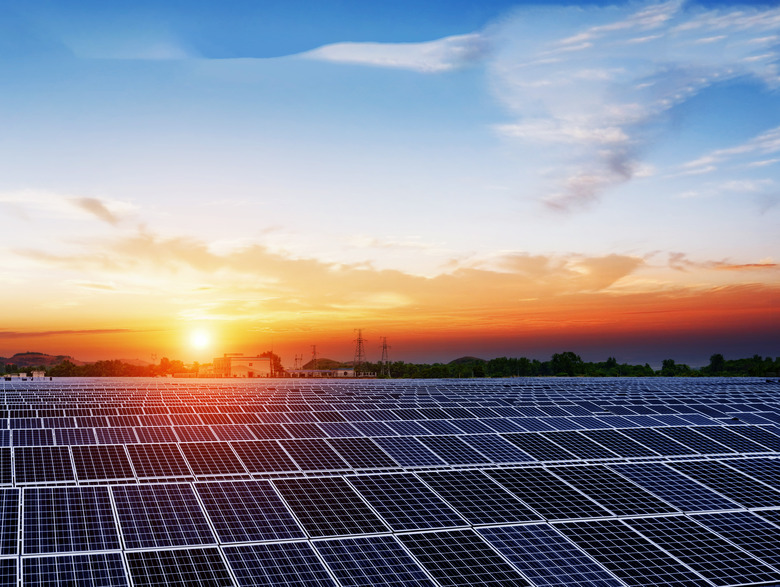Can Solar Batteries Charge Using Incandescent Light?
A solar cell can charge a battery from natural sunlight or from artificial lighting like an incandescent light bulb. A solar cell responds in much the same way to either kind of light; you can use incandescent light with a solar cell to charge a watch or calculator battery, provided the light is bright enough. The cell converts a range of light wavelengths into electrical energy; both sunlight and incandescent light contain these wavelengths, so the solar cell charges the battery from both sources.
Incandescent Vs. Solar Spectrum
Incandescent Vs. Solar Spectrum
Incandescent lights, the Sun and all other light sources produce what scientists call a "spectrum" – a spread of light wavelengths including long infrared waves, visible light, short ultraviolet waves and X-rays. Every source has a distinctive spectral pattern; for example, the Sun generates copious amounts of ultraviolet whereas an incandescent bulb produces very little. A solar cell responds to light wavelengths in different ways, converting some wavelengths to electricity while ignoring others. The cell roughly matches the Sun's spectrum; it processes visible light colors but cannot use the longest infrared waves. Because the spectrum of an incandescent light is close to the Sun's, a solar cell has no problem running on its light.
Energy From Light
Energy From Light
In addition to its spectral qualities, solar energy on a sunny day amounts to about 1,000 watts per square meter on the Earth's surface. However, a typical solar cell receives only a tiny fraction of this because its size is only a few square centimeters. A standard incandescent light bulb produces between 40 and 100 watts total and has most of the energy in the longest infrared wavelengths. If you hold a solar cell a few inches from a light bulb, it will receive a similar amount of light as it does from the Sun; although the Sun is more powerful by far, the close distance of the incandescent lamp makes up for its smaller output.
Distance,Time and Voltage
Distance,Time and Voltage
The energy received by a solar cell from an incandescent light diminishes rapidly with distance. The less light that falls on the solar cell, the weaker its output, so it takes longer to charge a battery. If the cell's voltage is lower than a minimum threshold value, it becomes impossible to charge the battery; for example, a 12-volt battery needs 12.9 volts to charge it. As long as light shines strongly on a solar cell, voltage should not pose an issue.
Efficiency
Efficiency
The solar cell works well either from the light of the Sun or an incandescent bulb. However, the light bulb's electricity has to come from somewhere, such as a power plant run on natural gas or nuclear energy – which costs money. Sunlight, on the other hand, is free for the taking. Although running a solar cell on artificial light works fine, it makes better sense to use sunlight.
Cite This Article
MLA
Papiewski, John. "Can Solar Batteries Charge Using Incandescent Light?" sciencing.com, https://www.sciencing.com/can-solar-batteries-charge-using-incandescent-light-7189/. 9 March 2018.
APA
Papiewski, John. (2018, March 9). Can Solar Batteries Charge Using Incandescent Light?. sciencing.com. Retrieved from https://www.sciencing.com/can-solar-batteries-charge-using-incandescent-light-7189/
Chicago
Papiewski, John. Can Solar Batteries Charge Using Incandescent Light? last modified March 24, 2022. https://www.sciencing.com/can-solar-batteries-charge-using-incandescent-light-7189/
